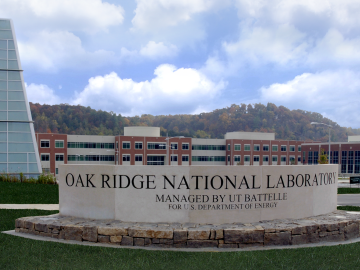Filter News
Area of Research
- (-) Biological Systems (4)
- (-) Energy Frontier Research Centers (5)
- (-) Nuclear Science and Technology (6)
- (-) Transportation Systems (3)
- Advanced Manufacturing (4)
- Building Technologies (2)
- Chemistry and Physics at Interfaces (4)
- Clean Energy (51)
- Fossil Energy (1)
- Functional Materials for Energy (4)
- Geographic Information Science and Technology (1)
- Isotope Development and Production (1)
- Materials (43)
- Materials Synthesis from Atoms to Systems (3)
- Materials Under Extremes (4)
- Neutron Science (8)
- Quantum Condensed Matter (1)
- Reactor Technology (1)
- Renewable Energy (1)
- Supercomputing (12)
News Type
Media Contacts



GreenWood Resources has licensed an Oak Ridge National Laboratory technology based on the discovery of a gene in poplar (Populus trichocarpa) that makes it easier to convert poplar trees into biofuels. GreenWood, a global timberland investment and asset m...

A 20-kilowatt wireless charging system demonstrated at the Department of Energy’s Oak Ridge National Laboratory has achieved 90 percent efficiency at three times the rate of the plug-in systems commonly used for electric vehicles today. This ability can help acc...

Researchers at the Department of Energy’s Oak Ridge National Laboratory will support two new DOE-funded projects to explore, develop and demonstrate advanced nuclear reactor technologies. The projects announced Jan. 15 will allow industry-led teams with participan...

With the production of 50 grams of plutonium-238, researchers at the Department of Energy’s Oak Ridge National Laboratory have restored a U.S. capability dormant for nearly 30 years and set the course to provide power for NASA and other missions.


A research demonstration unveiled today at the Department of Energy’s Oak Ridge National Laboratory combines clean energy technologies into a 3D-printed building and vehicle to showcase a new approach to energy use, storage and consumption. The Additive Manufactur...






